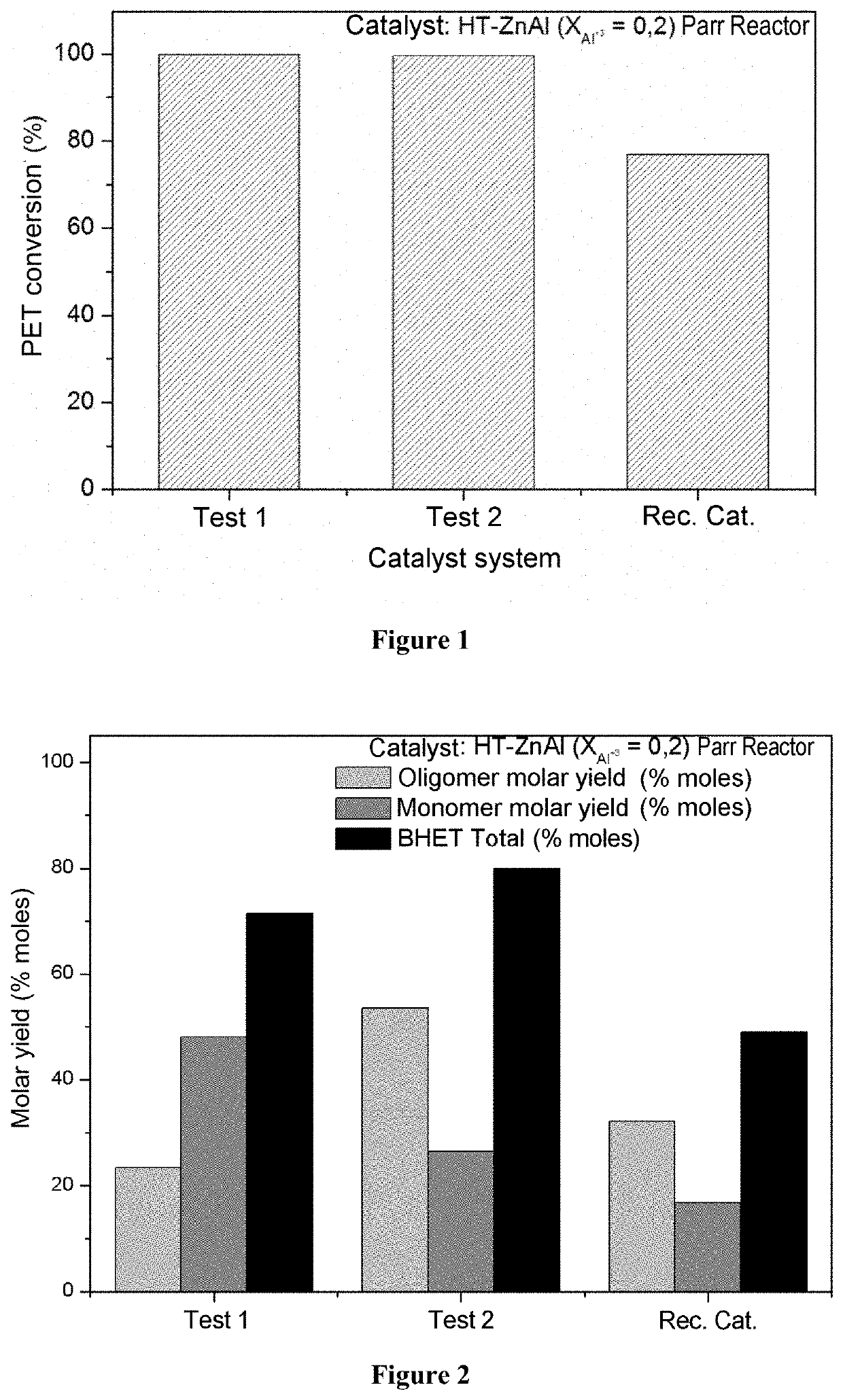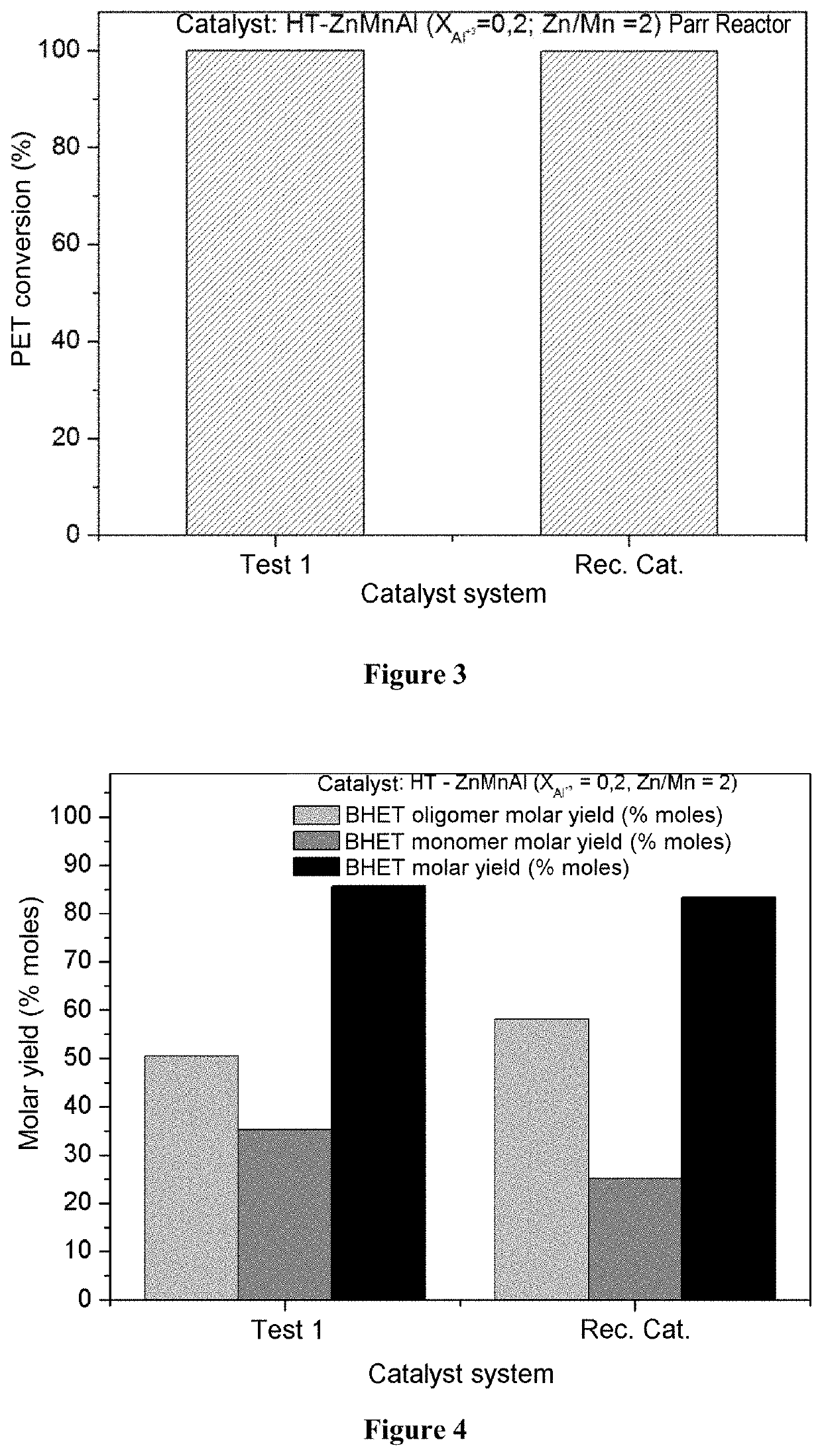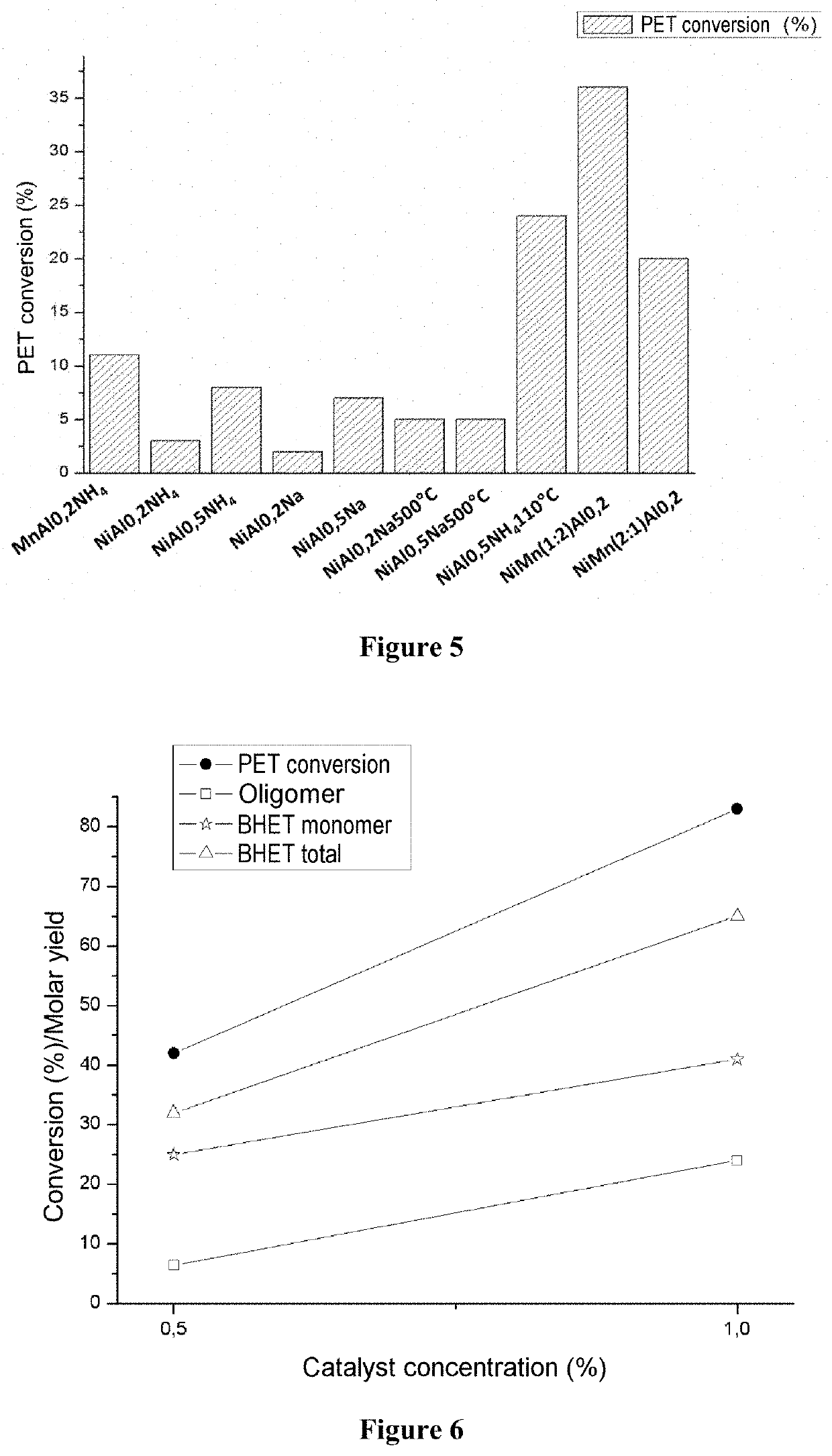Catalysts and method for producing recycled polyester
- Summary
- Abstract
- Description
- Claims
- Application Information
AI Technical Summary
Benefits of technology
Problems solved by technology
Method used
Image
Examples
example 1
lyst
[0078]In FIG. 1 the results are shown of PET depolymerization carried out in the Parr reactor on a large scale for subsequent repolymerization. Good reproducibility is noted in respect of the batch tests (Tests 1 and 2) employing the mixed oxide catalyst originating from the hydrotalcite precursor phase HT-ZnAl. For the virgin mixed oxide (Tests 1 and 2) there was an average conversion of 99.7±0.1% after 1 h of reaction, starting from 40 g of PET (averages of Tests 1 and 2). For the Rec. Cat. system (PET conversion=76.89%) the same catalyst was used as used in Test 2, but recovered and utilized in another reaction without passing through any process of regeneration. Although it had not been regenerated, the catalyst still demonstrated that it was active in the depolymerization reaction in spite of exhibiting a drop of approximately 22% in the catalytic activity thereof. In FIG. 2 the results are shown of the molar yield of the tests of FIG. 1. The quantities obtained of BHET oli...
example 2
talyst for Glycolysis of PET and of Fibres from Polyester Ropes
[0079]In FIG. 3 the graphs are shown of conversion of PET into BHET for the catalyst of the mixed oxide type obtained from the HT-ZnMnAl precursor phase, with the incorporation of manganese in the structure of the ZnAl. The virgin mixed oxide, and the reutilized oxide (Rec. Cat.) presented practically the same conversion. It is important to highlight that, in this case, the catalyst recovered from Test 1 was utilized in a further PET depolymerization reaction, however without heat treatment of drying and calcination and in conformity with the same PET / CAT proportion. It may be observed that the result of conversion of PET into BHET was perfectly reproduced (100% in Test 1 and 99.9% in the Rec. Cat.) when the result from the reutilized catalyst is compared with the result from the virgin catalyst (Test 1). It is important to highlight that, following carrying out Test 1, the catalyst retained on the filter paper was trans...
example 3
NiMnAl Oxide Catalyst for PET Glycolysis
[0084]To a reaction vessel of perfluoroalcoixide wrapped in a metal blanket there were added 25 ml of ethylene glycol, 5 g of PET and 25 mg of the catalyst previously calcined at a rate of 10° C. min−1 from the ambient temperature to 350° C., being held at this temperature for 3 h. This system was held for 18 hours at ambient temperature for the purpose of the prior and prolonged contact of the reagents. Following this, the reaction vessel was subjected to heating at a rate of 20° C. min−1 to 200° C., being held at the final temperature for 1 hour under mechanical stirring and autogenous pressure. The conditions listed were achieved utilizing a Mars Synthesis 6 model microwave reactor from CEM Corporation having temperature control and pressure readout. This stage was divided into two phases: Firstly, the phase of screening trials of Ni catalysts, having the objective of optimizing and detecting the catalyst presenting greatest conversion. The...
PUM
| Property | Measurement | Unit |
|---|---|---|
| Temperature | aaaaa | aaaaa |
| Temperature | aaaaa | aaaaa |
| Temperature | aaaaa | aaaaa |
Abstract
Description
Claims
Application Information
 Login to View More
Login to View More - R&D
- Intellectual Property
- Life Sciences
- Materials
- Tech Scout
- Unparalleled Data Quality
- Higher Quality Content
- 60% Fewer Hallucinations
Browse by: Latest US Patents, China's latest patents, Technical Efficacy Thesaurus, Application Domain, Technology Topic, Popular Technical Reports.
© 2025 PatSnap. All rights reserved.Legal|Privacy policy|Modern Slavery Act Transparency Statement|Sitemap|About US| Contact US: help@patsnap.com



